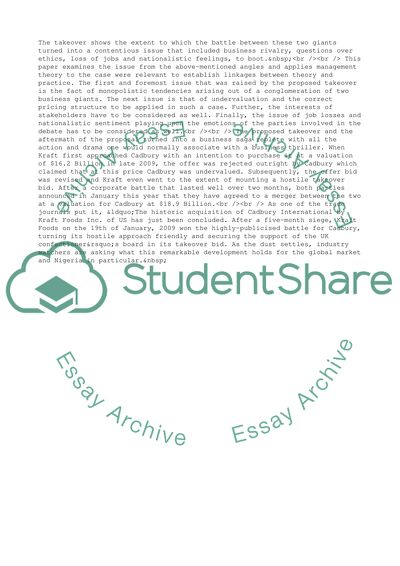Cite this document
(Cadburys Takeover by Kraft Foods Case Study Example | Topics and Well Written Essays - 2000 words, n.d.)
Cadburys Takeover by Kraft Foods Case Study Example | Topics and Well Written Essays - 2000 words. Retrieved from https://studentshare.org/business/1564270-global-marketing-ethic-and-culture
Cadburys Takeover by Kraft Foods Case Study Example | Topics and Well Written Essays - 2000 words. Retrieved from https://studentshare.org/business/1564270-global-marketing-ethic-and-culture
(Cadburys Takeover by Kraft Foods Case Study Example | Topics and Well Written Essays - 2000 Words)
Cadburys Takeover by Kraft Foods Case Study Example | Topics and Well Written Essays - 2000 Words. https://studentshare.org/business/1564270-global-marketing-ethic-and-culture.
Cadburys Takeover by Kraft Foods Case Study Example | Topics and Well Written Essays - 2000 Words. https://studentshare.org/business/1564270-global-marketing-ethic-and-culture.
“Cadburys Takeover by Kraft Foods Case Study Example | Topics and Well Written Essays - 2000 Words”. https://studentshare.org/business/1564270-global-marketing-ethic-and-culture.


